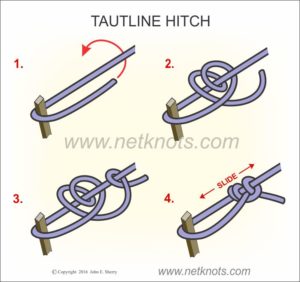In looking at the three broad learning perspectives, I would consider my current instruction style to be more behaviouralist focused. Over the past summer, I was a youth instructor at a summer camp. As one of three staff members in charge of approximately 25 youths aged 12-13, instructing them and adapting my teaching method to their learning styles was difficult. One of the methods most effective at instructing youths around the age of 12 is providing feedback and reinforcing positive actions of the youth. I believe that praising them for positive actions encourages them to continually aim for the recognition from us as staff members.
An example that ties in the positive reinforcement and recognition was when I was teaching the youth how to put up a tent using the knots that I taught them. The goal of this session was to have the youth be confident in tying the knots and successfully putting up their tents. The youth were split up into groups of 4 and the groups were tasked with putting up their tent. I supervised them and helped them whenever they had questions. One of the things I noticed was that not all groups were at the same proficiency level. One way I counteracted this problem was to have the groups who were successful in putting up their tents using the knots I taught, help the other groups who were struggling. The youth who were finished putting up the tent were considered “experts” and these experts helped the other youth until everyone was considered an “expert”. As a result, this gave the youth an opportunity to become an “expert” and allowed for a better grasps of the knots altogether. Lastly, with the youths becoming “experts” to each other, the overall retention of the knots learned was demonstrated at a high level of success.
I believe that one of the best ways of learning a concept is to teach the concept to another person because it forces the teacher to apply what they have learned and teach the concept to a learner. This helps solidify the concept as the teacher becomes more familiar with the concept and can also address any gaps in the understanding and/or learning.

Image retrieved from https://www.netknots.com/rope_knots/tautline-hitch
Comments on Peer Posts
Hi Seul,
Thanks for sharing your learning experience with baking! I find it fascinating that you included both your successes and failures as it gives me a holistic view on baking. In using Keller’s Arc, I am in the attention category as I am interested in baking, but I have not tried baking. Reading your post gave me some inspiration to attempt baking. Hopefully it does not fail, but if it does, I know it is just part of the learning process.
Hi Victoria,
Thank you for sharing your experience with learning English. As someone also having English as their second language, I know the difficulty of learning a new language. I think it’s great that your study plan incorporates self-encouragement and I am sure that you can see how much progress you have made.
One question I am interested in is how has your study plan changed since you began learning English? Were there any methods you found to be ineffective, and as a result, you replaced it with a more effective method?
Hi Jiyu,
You did a great job explaining each learning theory. I feel that I relate more to behaviourism than the other two theories. I think that being able to be given positive reinforcement is necessary in me learning a concept fully. Especially having the opportunity to teach young youth important skills, being able to provide feedback to help them improve is valuable to both the learner and the instructor.
Which of the three learning theories do you relate to most?
Hi Song,
You did a great job explaining how an instructor can apply each of the learning theories to teach a class of students. I personally enjoy answering constructivism questions in class because it allows for a variety of answer from students. Also there is usually no right or wrong answer, meaning that learners do not have to worry as much about the answers they give.
Out of the three learning theories, which one do you personally like best?
